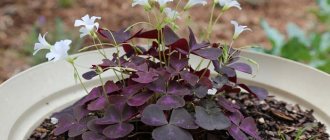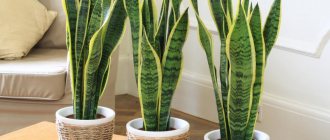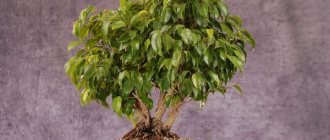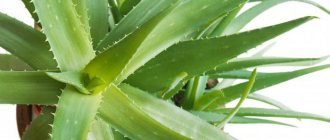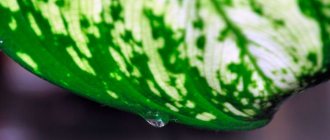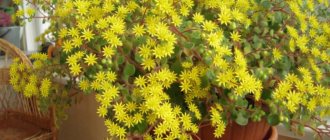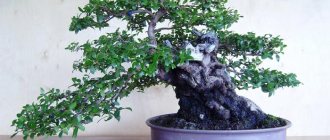Folk beliefs associated with indoor plants
- According to popular belief, cissus is a muzhegon plant. In other words, it is believed to be capable of driving men out of the house. Representatives of the stronger sex feel uncomfortable and insecure in the room where the birch tree is located. Therefore, they try to leave the territory protected by a plant hostile to them as soon as possible. Another superstition supports this belief, but adds details that a woman who keeps a cissus in her house will be constantly cheated on by her partners.
- For a married woman, a birch tree in the house means separation from her beloved man, divorce, but it is not recommended for young girls of marriageable age to keep cissus. The sign says that this plant will doom its unmarried owner to loneliness.
- On the other hand, it is believed that indoor birch gives its owners inspiration, a sense of beauty, new ideas and the desire to create.
- In addition, cissus promotes recovery, improves overall well-being, and elevates mood.
- The plant also cleanses the energy space of the home, harmonizes it, helps get rid of envy and resentment, and relieves tension between household members.
Characteristics of the variety and species diversity
Cissus is a creeping shrub belonging to the group of hanging plants. The stems are elastic, curly, the leaves are painted bright green and have a shiny surface. At home it blooms rarely, mostly with white or cream flowers. Sometimes it bears fruit. In natural conditions, there are more than three hundred species of cissus. Only a few are suitable for indoor growing. The most common ones include: rhomboid, antarctic and quadrangular species.
The rhomboid type is the most popular among gardeners. It is easy to care for and grows quite quickly. South America is considered to be its homeland. The plant is characterized by rapid and rapid growth, clinging to any support. The leaves are bright green, jagged, medium in size, reminiscent of grapes. This species is most often called grape ivy. The stems are flexible and thin, thanks to them the plant not only spreads to the sides, but also rises upward.
Cissus rhombifolia
In nature, this species can reach five meters, forming a dense mass of foliage. Among the representatives of the diamond-shaped cissus there are many popular varieties - Ellen Danica, Mandiana, Fiona.
The Antarctic species of cissus is slightly less popular. His homeland is Australia. Under natural conditions, the stems of the plant become lignified; in apartment conditions, the shoots do not lose their flexibility and elasticity.
Antarctic cissus
Antarctic cissus has oval, bright green leaves with jagged edges. Their size can reach 11 centimeters. The shoots and tendrils are fleecy, due to this they have a brown tint. In nature it blooms and bears fruit. The fruits are suitable for nutrition, but cause irritation of the mucous membranes.
Cissus quadrangularis is of Indian origin, found in Sri Lanka, southern Asia, partly in Africa and Arabia, and grows in the southern USA and South America. It grows up to one and a half meters, and the leaves reach 10 centimeters. The flowers are painted in light shades. Fruits small round red fruits.
Cissus quadrangularis
Its medical use has been known since ancient times. This plant was used to treat sprains, fractures, joint injuries, and was also used as an anesthetic.
In addition to those listed, there are a great many varieties of ornamental grapes: cactus-shaped, glandular, striped. However, they are practically not represented in the collections of amateur flower growers.
Is it possible to keep the plant in the house?
Signs and superstitions associated with indoor birch are extremely contradictory. Each lover of house plants will have to decide for himself whether it is worth keeping cissus in the house.
Benefit
If you listen exclusively to positive superstitions, then indoor birch is an excellent plant to keep in the house .
Her presence will help establish warm and trusting relationships between family members and other relatives, and will reduce the number of quarrels and conflicts. Cissus has a beneficial effect on the atmosphere in the home, filling it with lightness, harmony, warmth and comfort.
The birch tree will attract inspiration, new original ideas and opportunities for realizing potential into the home of creative individuals.
How can it be dangerous?
Impressionable women and girls who are overly concerned about their personal lives are not recommended to keep an indoor birch tree in the house. According to some beliefs, this plant drives men away from home. In order not to risk your relationship with your loved one or not be afraid of being alone for life, it is better to get another flower that is more friendly to the stronger sex.
Propagation of birch trees by cuttings and pruned branches
Birch trees are very easily propagated at home using cuttings. To grow a new flower, the apical shoots are cut off. They should have 1-2 internodes. Rooting can occur both in water and in a soil substrate of peat and sand. In order for the shoots to take root successfully, they are placed in a warm place with a temperature of about 20 degrees.
The twigs are also well suited for propagating birch trees. They are used during routine pruning. Pruning is done in the spring, when the plant needs to be rid of old and bare branches. The rejuvenation procedure is necessary so that the plant has a beautiful shape and decorative appearance.
As soon as the cuttings or branches take root, they are planted in nutritious soil. Birch is a fast-growing flower. Further care for the young plant consists of frequent spraying, moderate watering and fertilizing.
Feng Shui meaning
According to the Eastern teachings of Feng Shui, cissus symbolizes wisdom and life experience . The plant can give the owner self-confidence, determination and perseverance.
It is believed that a person in whose house an indoor birch tree grows is more open to knowledge and skills than others, remembers new information better and faster, and strives to comprehend and understand the world around him.
In addition, owners of cissus trees cope more easily with everyday problems and life's troubles.
Comments (4)
Kate
01/13/2020 at 10:17 |
In my experience, the plant is not at all picky. There is a pot with a flower near the window, which is often opened in winter for ventilation. It happens that a birch tree is enchanted. But it still grows back in the spring.
Answer
Yulia Expert Plodogorod
01/13/2020 at 18:33 |
Hello, Katya! Cissus is a truly hardy plant, but its safety margin is not endless. If such a flower is constantly overcooled, not only the above-ground parts, but also the rhizome may suffer, especially if watering was carried out immediately before the sharp drop in temperature.
This phenomenon is known as a “cold burn.” Moisture that has not yet been absorbed by the roots becomes very cold and can provoke a fungal disease. This will lead to the slow withering of the domestic birch tree.
In addition, intense exposure to cold air reduces the crop's immunity. As a result, susceptibility to infectious diseases increases. If there are other flowers nearby, they may become infected.
Considering what has been described, we recommend not placing plants near an open window in winter. This will affect the decorativeness and health of even such an unpretentious crop.
Answer
Where is the best place to place the cissus?
- If quarrels often break out in the family, and it is difficult for household members to listen and understand each other, the birch tree should be placed in the room where all family members usually spend their free time, for example, in the living room or kitchen.
- A pot of cissus in a schoolchild or student’s room will help him quickly absorb large amounts of material being studied.
- People associated with art are advised to keep a birch tree near their desk or other place where they are creative. The plant will provide an influx of fresh ideas and creative thoughts.
- If someone in the house is sick, you should keep a pot of cissus in the sick person’s room. The plant will take away negative energy and help the person recover faster.
Indoor birch is an interesting and unpretentious plant that can decorate any home with its presence. As for beliefs and signs, each person decides for himself whether to take them into account or not. But still, it is better for overly superstitious people to refuse to keep flowers in the house, the properties of which are said not only to be good. Otherwise, instead of pleasant communication with a green friend, only fears and anticipation of negative events await.
Secrets and difficulties of caring for cissus at home
Cissus grows very quickly, entwining itself with all available supports. It is often used in interior compositions or for decorating fences in garden areas - it creates a spectacular hedge.
At home, the Antarctic and rhomboid species are most common.
They are quite easy to care for and grow in almost every room. That is why they are recommended for inexperienced flower growers. The plant’s undemanding nature allows it to be used to decorate remote and poorly lit areas of the room.
You may be interested in:
Aglaonema - home care, types and signs A large selection of varieties of house flowers allows you to choose the ideal plant for the amount of lighting that...Read more...
General rules
Like most tropical and subtropical plants, home grapes prefer bright, but diffused light. The best place to place it is considered to be the south or west side at some distance from the window. Cissus also does well in the shade.
It is better to protect the bush from bright direct sunlight. The plant is sensitive to the sun and may suffer from burns, so it is better to shade it in bright light.
If there is a lack of natural light, additional lamps are used.
Cissus is adapted to various temperatures from 10 to 25 degrees Celsius. Some species can withstand lower temperatures - up to +5 degrees.
In summer, the flower feels good outdoors. The warm summer wind will not harm it, but it is better to protect the bush from drafts. A sudden drop in temperature can cause the plant to completely lose its leaves.
Despite its tropical origin, cissus easily tolerates insufficient air humidity. In summer, in the heat, and in winter, when heating devices are running, it is advisable to spray it regularly.
Water homemade grapes regularly as the soil dries out. In summer, watering should be intense, but not excessive, so that the roots do not rot. Use soft water at room temperature. In the autumn-winter season, watering is reduced. It is necessary to moisten the soil enough to support the work of the roots.
Feeding is carried out during the period of active growth - spring and summer. The procedure is carried out on average once every two weeks using universal mineral fertilizer. In winter, fertilizing is not required.
Advice!
Since cissus is a hanging plant, it is recommended that it be installed with a support around which it can twine. Or place it in a hanging pot so that the creeping cuttings gently fall down.
Despite the existence of general rules for maintaining grape ivy, its different types have their own characteristics.
Caring for Cissus Rhombolifolia
The unpretentious diamond-leaved cissus does not require complex care, and its spectacular appearance will decorate any interior.
Loves light, but is afraid of direct sunlight. To avoid burns, the plant is placed further from the window. It grows well in the shade, but with a lack of light, the castings thin out and the stems take on a more elongated shape.
In winter, it tolerates temperatures of 14 degrees, while watering is reduced significantly - the soil should dry out by at least two-thirds. In summer, water the plant abundantly, but not excessively.
Every year, the rhomboid species is transplanted into fresh nutrient soil, and fertilizing is carried out several times a year. The need for it will be indicated by the appearance of the leaves - if they turn slightly yellow, it means it’s time to apply fertilizer.
Caring for Cissus Antarctica
The Antarctic cissus does not have an urgent need for bright light, but it has an extremely negative attitude towards temperature changes in the room. At the same time, heat is more preferable to him than hypothermia.
In summer, this species is watered frequently and abundantly; regular spraying is also necessary. Dry air may cause spots to appear on the leaves. Fertilize the bush frequently, using a nitrogen or phosphorus-containing nutrient as necessary. In winter, the plant is watered little and kept cool. It is replanted every year, always using nutritious soil.
Care and healing properties of Cissus Quadrangularis
The quadrangular variety of cissus is rarely cultivated indoors. This large plant with fleshy stems came to Europe from hot India. Despite thick stems up to 1 cm, its leaves are not large, fall off quickly, and grow rather slowly.
Interesting!
Loves a lot of light, but this does not affect the growth rate.
European medicine is actively studying the therapeutic potential of the flower, while Indian medicine has brought to this day a lot of information about its use in the treatment of bone tissue and joints. Today, its effect on the rate of bone healing, pain relief, and effectiveness in weight loss has been proven. In addition, other capabilities of the plant are known:
- improves metabolism;
- relieves fatigue and tones the body;
- prevents the development of diseases of the cardiac system, stabilizes blood pressure;
- lowers blood sugar levels and prevents the development of diabetes.
Not all of the plant’s capabilities have been studied to date. Research continues in many European countries.
You may be interested in:
When and how to prune geraniums for the winter at home so that they bloom and are fluffy Geranium is a bright decoration for the home windowsill of a hospitable housewife. The plant is common among indoor plant lovers…Read more…
How to propagate and replant a flower at home
The best time for transplantation is considered to be the beginning of spring. A young plant is replanted every year, adult bushes - approximately once every two to three years. In order not to injure the plant, they use the method of transplanting with an earthen ball - the so-called. transshipment, adding fresh soil on top.
Transfer
If the roots of the plant show signs of rotting, the soil is completely replaced. For planting, choose a small pot, not much larger than the previous one. Cissus prefers some cramped conditions, and feels uncomfortable in a large pot.
To propagate homemade grapes, they use the method of cuttings and dividing the bush.
To propagate by cuttings, a shoot with several leaves is cut from the upper stem and placed in water until roots appear. Afterwards, the plant is rooted in a small container with the usual soil. In order for the bush to have a more lush appearance in the future, several shoots can be planted in one container at once.
Propagation by cuttings
When replanting, you can resort to the method of dividing the bush. To do this, an adult flower is divided so that each part has a strong, developed root and an adult healthy shoot. The resulting bushes are rooted in new containers in the prepared substrate and cared for in the usual way.
